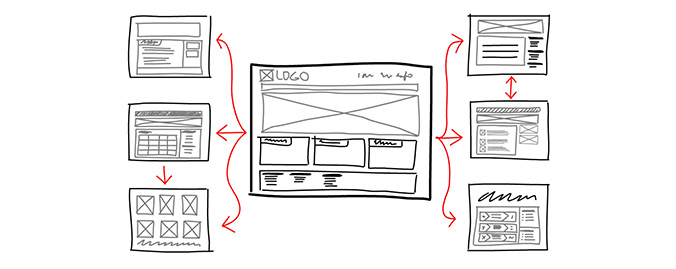A business’s SEO performance is vital to a website’s visibility to customers, as well as their overall online success. There are a number of ways a business can optimise their webpage for stronger SEO performance, such as more effective content creation, building of external backlinks or improvement of website structure. Website structure in particular is one of the least focused aspects, even though it can have a significant impact on SEO.
This guide explores website structure for SEO improvement further:
Why is Website Structure Important?
Website structure looks at how a website is laid out, i.e., site hierarchy, navigation layout and even internal linking. All of these aspects need to work together to provide easy digestible information for both users and search engines. It is important to ensure the structure appeals to both of these groups, as both play a key role in determining overall SEO performance.
Websites are created with the main goal of enticing customers to convert, whether this be purchasing a product/service or enquiring about a business. The success of this goal is reliant on a website’s UX (user experience). This is not only making sure the website content makes sense, but that users can easily navigate to specific pages within a few clicks. If a user is unable to navigate a website they will leave, and, if enough people have the same issue, this can in turn lead to a negative impact on SEO ranking due to the increased bounce rate.
Search engines on the other hand need to be able to effectively understand different websites and their content, as their main role is presenting relevant information to users. If a business’s website can be easily understood (i.e. easily crawled) then it is easier for search engines to index and rank the page within relevant searches. As search engines will ultimately determine the SEO performance of a website, it is important that a web page’s internal architecture is configured to easily communicate with search engines.
Tips for Website Architecture
1. Have a well laid out site structure and hierarchy
There are a few different aspects to effective website layout, the first of which is deciding what the main pages on the site should be, followed by what sub-pages should fall under each. This can be determined through keyword research, as well as looking at the layout of competitor’s websites and your key product / service offerings. This allows for grouping of content together and for URL silos to be created. For example, on a website bathroom products may have the url “bathroomsrus.com/bathroom-products” whereas bathroom accessories would be “bathroomsrus.com/bathroom-products/accessories”. This allows for easier usability/navigation for a user, but also helps search engines better understand a website’s structure.
2. HTML and XML sitemaps
XML sitemaps are essentially roadmaps for search engines on how a website is structured, whereas HTML sitemaps can provide an overview for users on how a website is organised. Both essentially provide an easy method for users and search engines to understand a webpage’s layout, which can be invaluable for businesses that want to make their information easily accessible.
3. Smart usage of internal linking
Internal links between pages cannot only provide easy navigation on a site, but can also provide further information to search engines on the subjects and contents of particular pages. For instance, a page has an internal link on the phrase “pet food tips” and then links to a page discussing “the best types of pet food”. This link provides information to the search engines that the page being linked to is discussing pet food and that it can be a useful source for individuals searching for information on pet food.
4. Avoid keyword cannabilisation and duplicate content
A common mistake that businesses make is to write content that is similar to other content on a website. While there will of course be overlaps in information across a website, it is important to never have too much duplication for a couple of reasons. Firstly, a business risks keyword cannibalisation, this means that both pieces of content will compete against each other for the same keywords searched by users. This can lead to negative outcomes for the website and can also sometimes cause the less qualified piece of content to be provided to the individual. So be sure to highlight which content you want to primarily rank for which keywords. Secondly, duplicate content can sometimes be flagged as spam by search engines, which can be quite harmful to SEO performance. Finally, too many pages with the same message can be confusing to users of a webpage and can highlight potential issues around a business.
5. Pruning your content
With any website bigger does not mean better. Google only has a limited crawl budget for each website, meaning that if a website is very large Google will not necessarily crawl, index and then serve all these pages in the search engine results. Therefore, it is vital that businesses make sure they have their most important pages easily accessible (no more than two clicks away on the website) and any outdated or low quality pages are removed to ensure only the highest quality pages are crawled.
Effective website design can be a complex undertaking, however the benefits that a well thought out site structure can have to SEO ranking makes it invaluable to any company website. To find out more about how to optimise your website structure or for help on redesigning your site’s architecture, reach out to the team at Redline Digital today!
